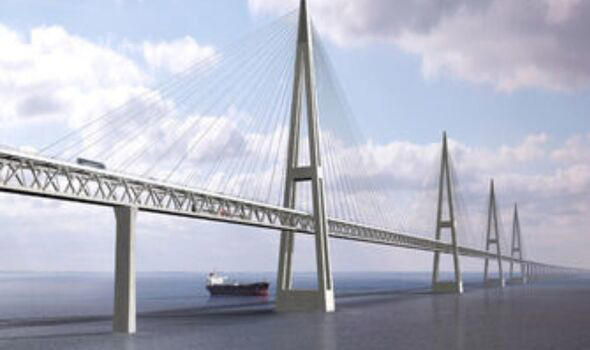
Our Correspondent | Africa Guardian
Plans are underway for a groundbreaking project to connect Africa and Asia with what could become the world’s largest suspension bridge. Estimated to cost £100 billion, the proposed “Bridge of Horns” would stretch an astonishing 20 miles across the Red Sea, linking Djibouti in East Africa to Yemen in the Middle East.
Engineering Marvel
The Bridge of Horns would feature a six-lane causeway capable of accommodating 100,000 vehicles daily, along with a dedicated rail crossing to transport 50,000 passengers each day. At 700 meters tall, including 400 meters above water, the bridge would allow massive ships to pass beneath it, maintaining the vital shipping route to the Suez Canal.
Visionary Cities of Light
The project also envisions the creation of two futuristic cities, dubbed “Al-Noor Cities” or “Cities of Light,” on either side of the bridge. These urban centers are designed to house a combined population of seven million—2.5 million in Djibouti and 4.5 million in Yemen.
A Bold Vision for Economic Growth
The initiative, spearheaded by Sheikh Tarek Bin Laden, aims to spur rapid economic development in the region, making it a global hub for trade and innovation. Sheikh Bin Laden has even expressed plans to replicate this model with 98 additional cities worldwide, with potential locations in Syria, Egypt, Sudan, and Saudi Arabia’s Mecca-Jeddah corridor.
Challenges and Delays
Initially unveiled in 2008, the Bridge of Horns remains in the planning stage, awaiting approval from the governments of Yemen and Djibouti. Logistical hurdles, including the construction of new highways in cities like Addis Ababa, Nairobi, Jeddah, Dubai, and Riyadh, present significant challenges to the project’s realization.
If brought to fruition, this monumental bridge could redefine connectivity between Africa and Asia, creating unprecedented opportunities for economic and cultural exchange.
___
